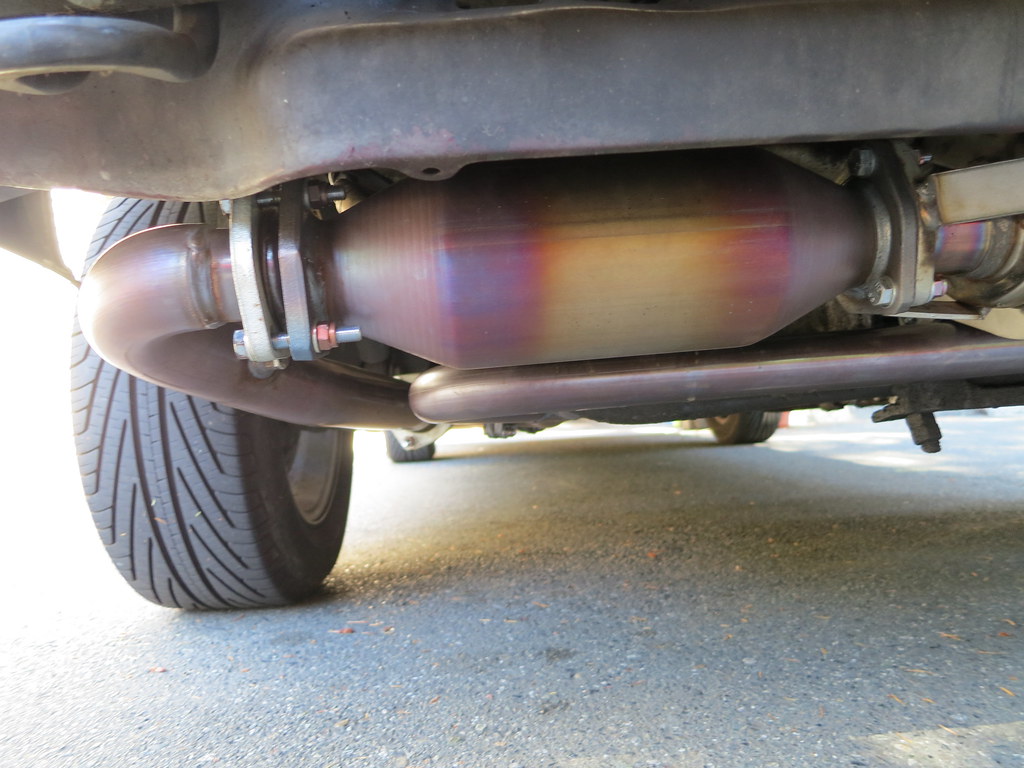Contents
– Composition of the exhaust catalyst
– Exhaust catalyst: role and operation
– Common exhaust catalyst failures
– Exhaust catalyst prices
The exhaust catalyst is an essential part of vehicle pollution control. It dates back to the 70s since it was adopted on private vehicles to meet air pollutants’ emission standards. This post tells you more below.
Composition of the exhaust catalyst
The exhaust catalyst consists of a stainless steel part through which the exhaust gases pass. The exhaust gases pass through a ceramic structure comprised of many small ducts (also called “honeycomb”). The vents inside are covered with a thin layer of precious metals: alumina, cesium oxide, palladium, radium.
The huge catalytic surface area enables more than 90% of the exhaust gases to be transformed into less polluting substances.
Exhaust catalyst: role and operation

As a catalysis phenomenon, when it reaches a temperature of about 400°C, it reduces the most toxic constituents of the exhaust gases, carbon monoxide, unburnt hydrocarbons, and nitrogen oxide.
Exhaust catalysts have a service life of 100,000 to 150,000 km. Depending on their use, they gradually lose their original quality. On the new generations of vehicles, it is very often installed directly on the engine to heat up more quickly.
There are two types of exhaust catalysts for gasoline and diesel vehicles:
– The three-way exhaust catalyst, reserved for gasoline vehicles. When it reaches temperature, it causes three simultaneous chemical reactions that transform nitrogen oxide, carbon monoxide, unburned hydrocarbons into carbon dioxin and water.
– The so-called two-way exhaust catalyst, reserved for diesel vehicles. When it reaches temperature, it causes two chemical reactions that convert carbon monoxide and unburned hydrocarbons into carbon dioxin and water.
Common exhaust catalyst failures
When an exhaust catalyst fails, it can manifest itself in several ways:
– Catalyst clogging often due to a fuel mixture problem or very short runs. The exhaust catalyst does not heat up sufficiently. The engine management light may be on.
– The ceramic structure breaks, which can create a metallic noise at idle and in some cases block the exhaust outlet. This causes the engine to stall.
– Destruction of the precious metal layers by:
– various products such as too much fuel, coolant, or oil.
– segmentation problems, turbo problems, faulty injectors, or head gaskets.
– Penetrating corrosion of the tubes welded to the catalyst.
Tips
To keep the exhaust catalyst working longer:
– Avoid short trips.
– Take regular fast lanes to allow the exhaust catalyst to warm up to operating temperature. But, please remember to respect the speed limit!
Exhaust catalyst prices
The price of simple gasoline or diesel exhaust catalyst varies from $300 to more than $1,000, depending on the make. The replacement time is about 1 to 2 hours, depending on the vehicle model.
Due to air pollutants’ emission standards, diesel vehicles must be equipped with a particulate filter (DPF), often coupled with the exhaust catalyst. The prices of these are much higher, up to more than $2,500.
Read more here:
Can a clogged catalytic converter be unclogged?
Car Repairs: How to Fix a Clogged Catalytic Converter
How to Clean a Catalytic Converter
Why Will You Remove the Catalyst Converter?
Hope the above helps you out. Next time your mechanic talks about a catalytic converter issue, you will better understand what he is talking about. Last but not least, tell us how you find the information from this post and this blog site. Remember to share this post and jot down your request for another topic related to cars and motors.


1 comment
[…] – What Is the Function of the Exhaust Catalyst; […]